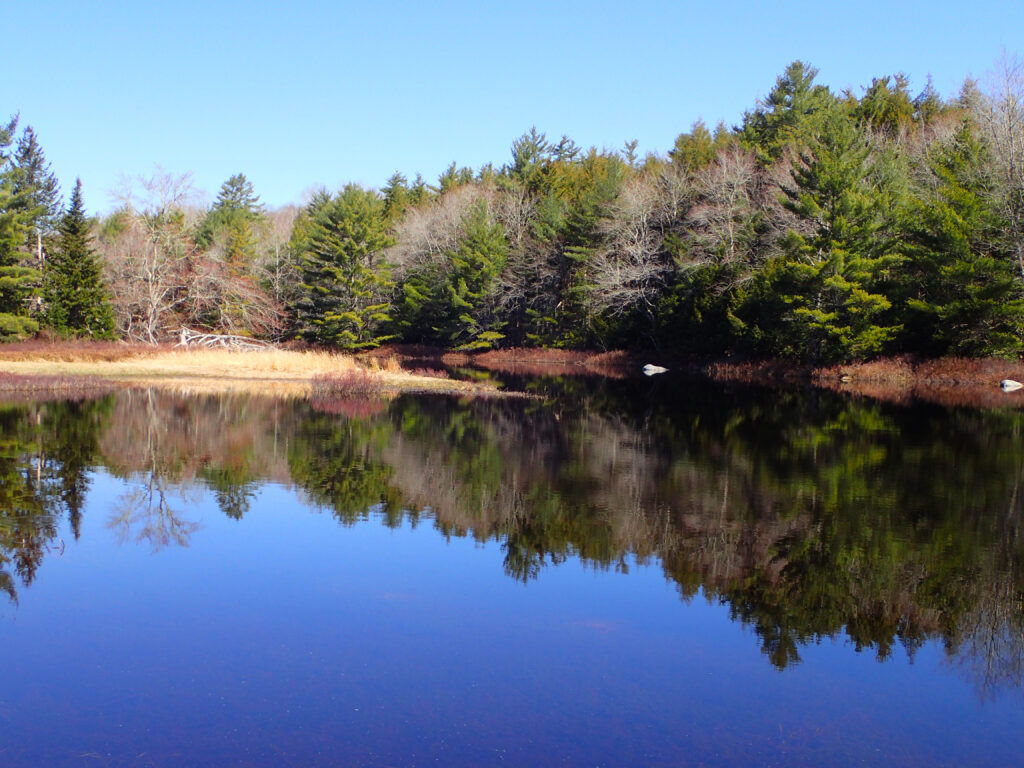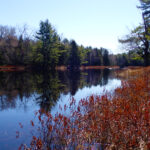Saving Turtles—Conservation Success on the Medway River
29 May 2020

There is exciting news for endangered turtles in Nova Scotia, with securement of another large and significant turtle refuge. The new protected area features approximately 245 acres of forests, wetlands and river shoreline just north of McGowan Lake along the Upper Medway River in Annapolis County.
The large property supports Critical Habitat for the Blanding’s turtle, a species listed as endangered under both the federal Species at Risk Act and Nova Scotia Endangered Species Act. The property features approximately a kilometre of shoreline along the Medway River, which turtles are known to use for travel, as well as lakeshore and brooks. Turtles have been found nesting on the property, and since Blandings turtles return to the same nesting and overwintering sites year after year and are slow to reproduce, protecting nesting habitat is essential for their recovery and conservation. Much of their habitat, including the Medway River and associated lakes, faces ongoing threats due to cottage development and road networks.
Several other federally and provincially designated Species at Risk also benefit from the site’s protection. Painted Turtles occur throughout its watercourses and riparian wetlands, which also provide potential habitat for Snapping Turtles and several bird Species at Risk.
Beyond protecting Species at Risk, this site’s securement has broader strategic conservation value in building ecological integrity and connectivity. It provides important connectivity between two Blanding’s Turtle populations associated with the Medway River, is directly across from the Medway River Wilderness Area, and close to provincial Crown land proposed for designation as Katowe’katik (formerly McGowan Lake) Wilderness Area as well as other Nature Trust conservation lands on McGowan Lake.
Protecting large and relatively intact natural landscapes is essential to provide the diversity of habitat conditions that turtles require for feeding, basking, nesting and overwintering. Turtles can travel five or six kilometers to meet these habitat requirements. Such large, interconnected natural areas are also essential for long-term population viability in light of potential climate change impacts on the landscape, potentially forcing populations to move to more suitable habitats over time.
This success builds on exciting multi-partner conservation efforts in this area. We are part of an innovative conservation collaborative working together to advance biodiversity conservation in Southwest Nova Scotia (Kespukwitk), a region identified nationally as a national Priority Place for conservation. We are actively working with the Province to identify and secure additional priority lands for turtles in the area and to fill in critical gaps in habitat connectivity. We are fundraising currently for a 40 acres turtle site nearby at Pleasant River.
We are also working alongside other conservation organizations including the Mersey Tobeatic Research Institute, Clean Annapolis River Project and Indigenous partners in providing landowner outreach and education, monitoring and safeguarding sites and species, providing community education and active habitat restoration and stewardship. We look forward to expanding these partnerships and deepening collaboration in the days ahead.
The purchase of this significant win for biodiversity was possible thanks to funding by the Government of Canada through the Canada Nature Fund, the Nova Scotia Crown Share Land Legacy Trust, and donations from the tremendous appreciated individuals, families and businesses who continue to support our biodiversity conservation efforts, even in these challenging times. Thank you for helping to save our treasured turtles!




